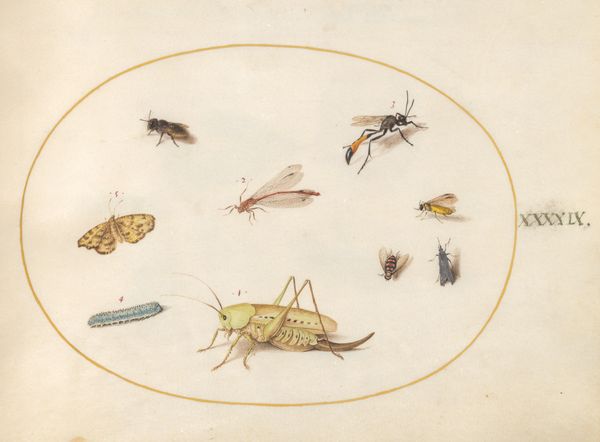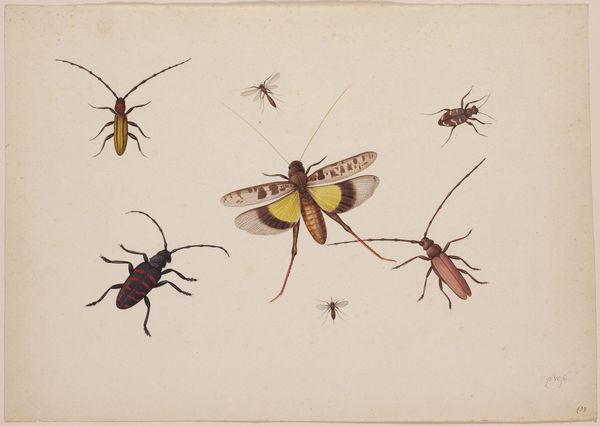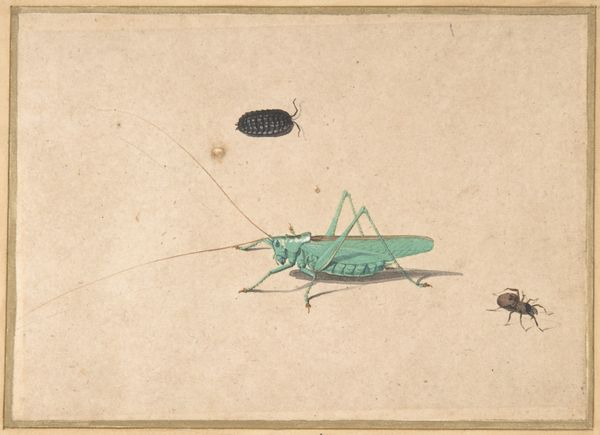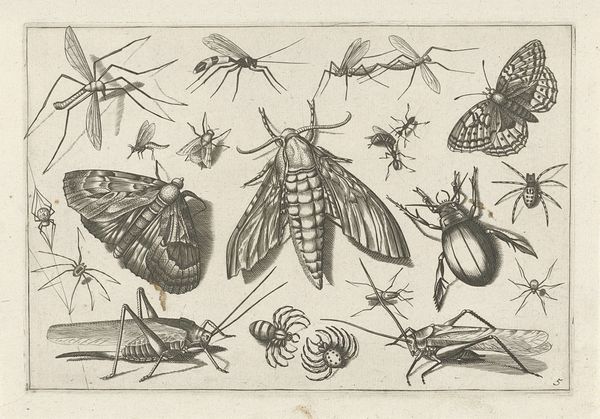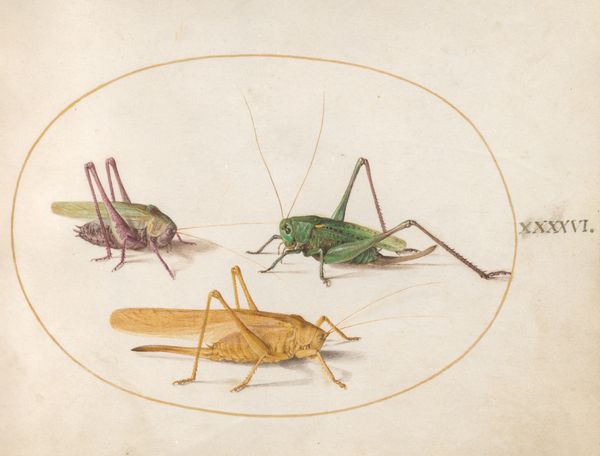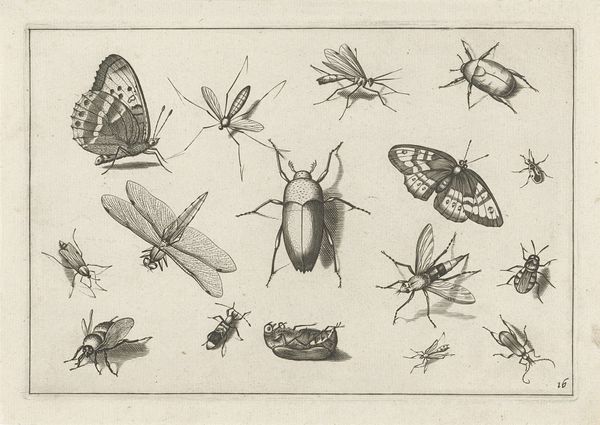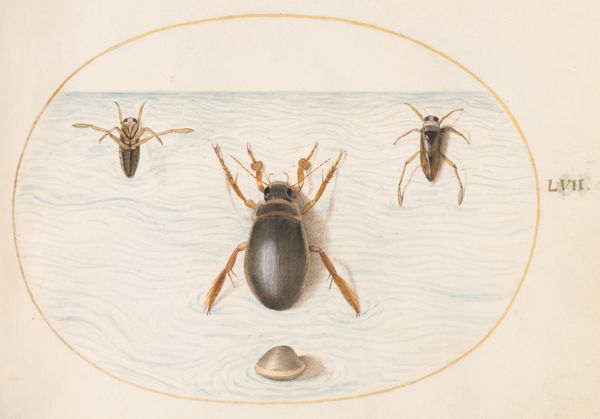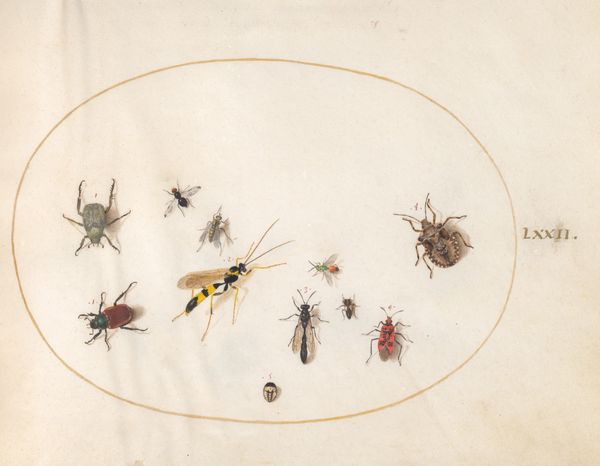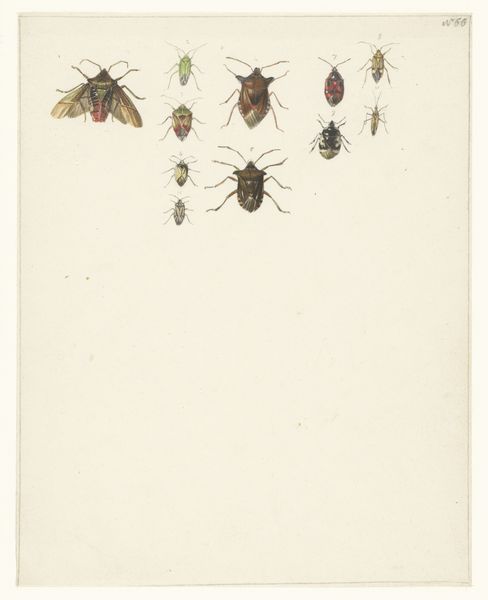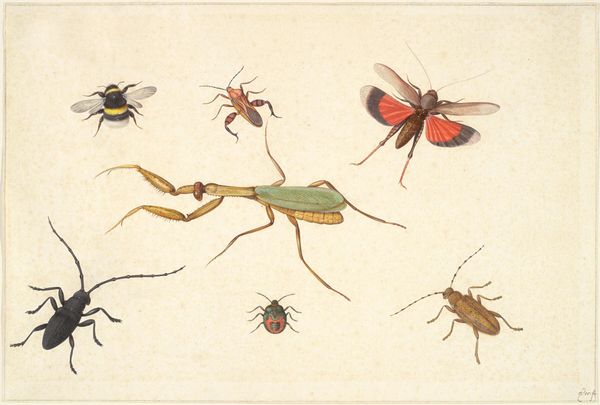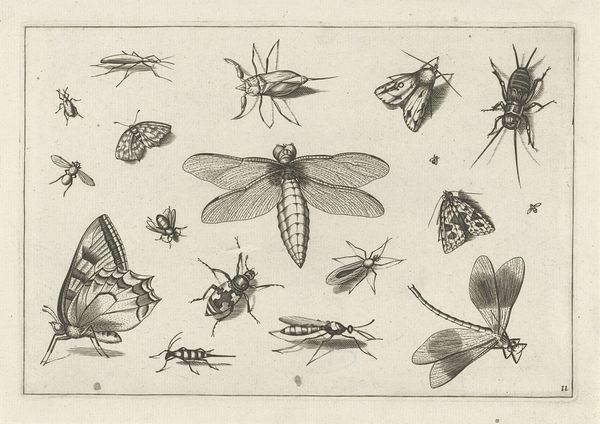
drawing, watercolor
#
drawing
#
11_renaissance
#
watercolor
#
sketchbook drawing
#
watercolour illustration
#
naturalism
#
watercolor
Dimensions: height 160 mm, width 207 mm
Copyright: Rijks Museum: Open Domain
Curator: Well, aren't these fellows captivating? This is a sheet featuring six different beetles, rendered in watercolor, dating back to the 17th century. The artist here is Pieter Holsteyn the Elder. Editor: Whoa, look at those colors! The one in the middle, that iridescent green head, against the almost velvety, maroon body, gives the impression of little jewels. The composition feels like an abandoned science notebook sketch of bugs discovered in a hallowed garden. Curator: Holsteyn was a master of the naturalistic style. You see, this sheet probably formed part of a larger collection, possibly an inventory of the natural world, popular among collectors and scholars of the period. Curiosity about the world, about new scientific discoveries, fueled the need to carefully record them and to then disseminate them among peers, like specimens in a Renaissance cabinet of curiosities. Editor: True, but the level of detail! Imagine painstakingly painting each tiny leg, those minute textures. The lighting almost tricks my mind; the largest beetle’s shadow tricks the viewer into imagining that the whole group are real little crawlers under a piece of parchment. Do you think he felt some odd tenderness toward them? I mean, really observe something so closely, and you start to feel something. Curator: The degree of accuracy and precision reflects not just tenderness, perhaps, but also the larger patronage system. Holsteyn, like many artists, relied on commissions from wealthy patrons and institutions interested in scientific illustration. This kind of drawing also speaks to the growing importance of the empirical observation of nature within the rising scientific establishment, reflecting changing cultural values, Editor: Cultural values? It gives the term ‘avant-garde’ a whole new meaning—those six legs crawling toward progress. These insects were, at that time, more important and worthy than poor villagers that were living on this period; yet, those beetles could, with some stretch, give some comfort to them. Curator: It’s intriguing to ponder the shifting artistic standards embedded in each beetle. How do we determine artistic worth? And, furthermore, were drawings like this ever considered "art" by contemporaries, or only valued as part of science and broader political, social trends? These are vital questions. Editor: In short, it seems art makes everything…complicated. But that dark exoskeleton does indeed cast an amazing, intricate shadow.
Comments
rijksmuseum about 2 years ago
⋮
Pieter Holsteyn I, together with his son, produced many drawings of animals, especially birds and insects. On this sheet he grouped various species of beetles, including a black musk beetle and a large cockchafer. Their ‘armour’ glimmers like jewels, and by providing even the smallest insect with a light-grey cast shadow, the artist created a strong sense of space.
Join the conversation
Join millions of artists and users on Artera today and experience the ultimate creative platform.

